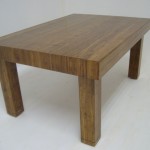Steps in Glazing Kitchen Cabinets
Whether you desire to add character or appeal to your already painted kitchen cabinets, or you just want to darken up stained wood cabinetries, furnishing them with a regal and antique look with the use of colorant and some techniques is pretty easy. The following are the simple steps in glazing kitchen cabinets.
Materials
It is not necessary to remove the doors and the hinges of your cabinets. This is specifically advantageous if small glaze of shine over the hinges is up to your standard.
Also, make sure to research techniques on staining kitchen cabinets before starting your project.
The materials for this task are:
* Some brushes
*Water based or oil glaze
* Colorant, stain or paint
* Many lint-free rags
* Paint thinner
What to Do
1. Light colored wood stained cabinets can be darkened by making use of oil-based glaze. If you are not very familiar with glaze, it is a clear substance in which you mix color. It provides a simple look and remains wet until you attain your preferred glazed effect.
2. Mix some oil stain in your preferred color to the glaze. You must experiment a little with various mixes and apply it on the interior of the scrap wood or cabinet doors to determine the look you want to pull off in glazing kitchen cabinets. Use the “apply and wipe” technique together with the natural grain of wood.
3. Take all the cabinet knobs and pulls. Remove the drawers since they are easier to glaze when they are lined up or placed along your countertops. Clean them using denatured alcohol.
4. Now use the brush with natural bristle to apply the glaze in the cabinet in sufficient amount. Use lint-free and clean rags to wipe the glaze until you reach your preferred look. Finish one section before you jump to another. Stand back several times to make certain that the glazing looks consistent.
Things to Remember
* Go for colorants or paints that are darker than the current color of your kitchen cabinets.
* Different from oil based glaze, the acrylic glaze is milky and dries out clear. Remember that it darkens a bit when drying out.
* Don’t get frustrated when you mess up a section since you can always redo it by applying hot water and wiping the fresh glaze with a rag so you can start over again.
* Wiping off any excess glaze when glazing kitchen cabinets will push the remainder in edges and corners of the cabinet frames and will result to hand-rubbed look.
* Bear in mind that you are not after evenness when glazing kitchen cabinets; instead you are aiming for fascinating and old cabinetry look.
